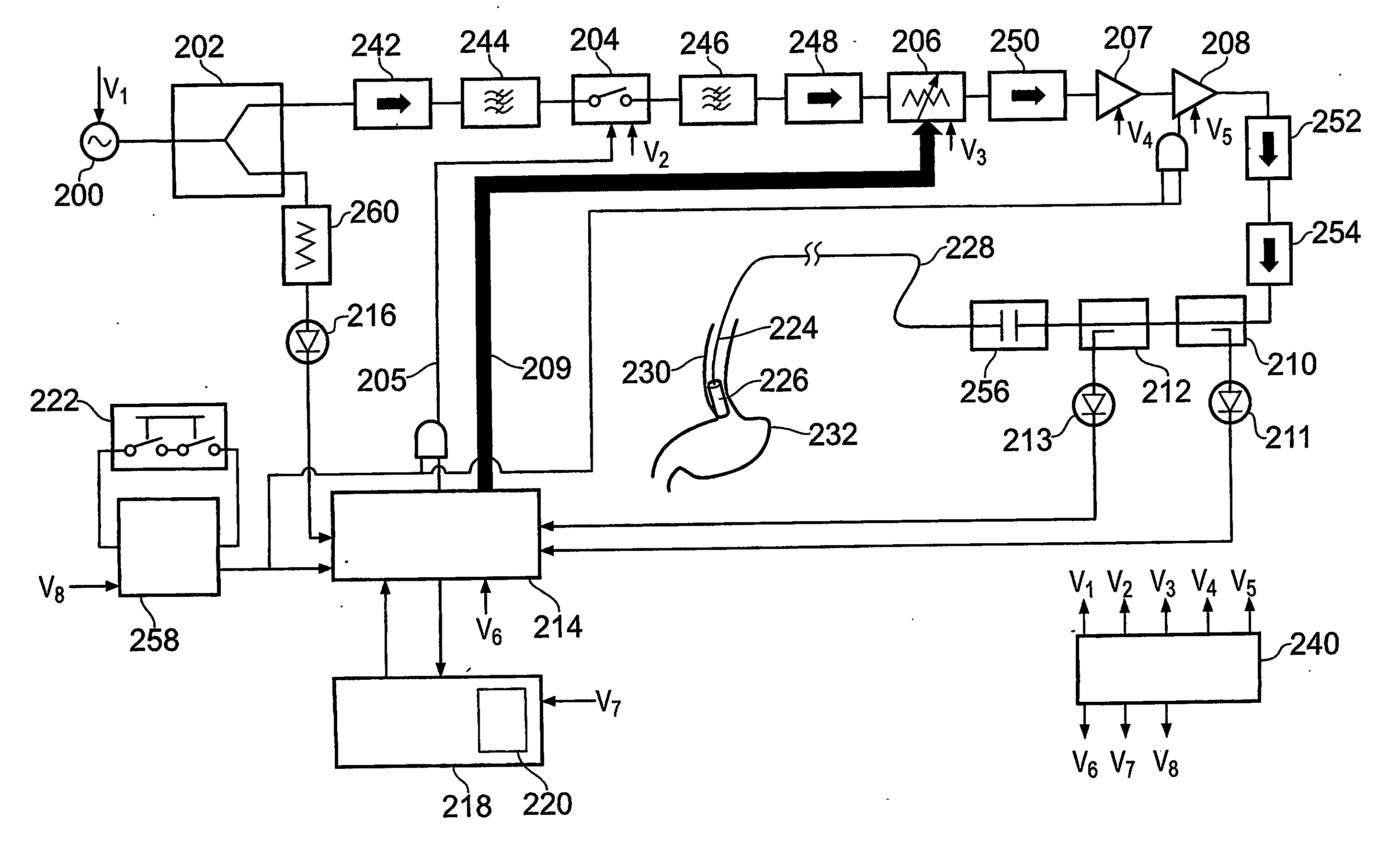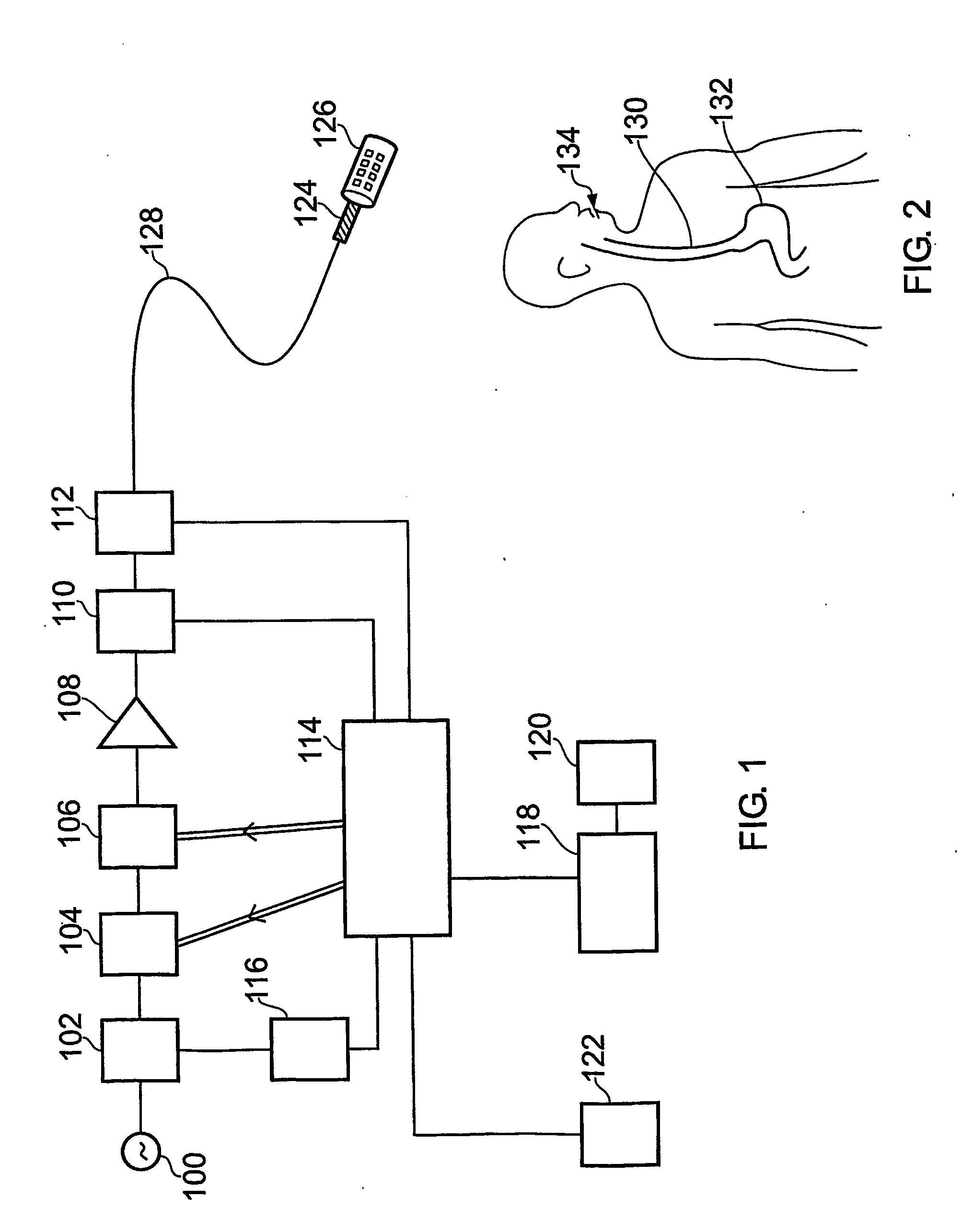Oesophageal treatment apparatus
a technology for oesophageal and oesophageal tubes, which is applied in the field of oesophageal treatment apparatuses and methods of treating tissue, can solve the problems of inflamed and irritated oesophageal tubes, pain and heartburn symptoms, and the development of cancer in the lower part of the oesophageal tube, so as to prevent erroneous signals from reaching the patient, the effect of fas
- Summary
- Abstract
- Description
- Claims
- Application Information
AI Technical Summary
Benefits of technology
Problems solved by technology
Method used
Image
Examples
Embodiment Construction
; FURTHER OPTIONS AND PREFERENCES
Treatment Apparatus
[0134]Firstly, an overview of an embodiment of the whole treatment system will be given, with reference to FIGS. 1 to 3.
[0135]FIG. 1 illustrates the basic structure of the apparatus for treating the oesophageal wall. A stable microwave signal is produced by a microwave source 100. This signal is split into two by splitter 102.
[0136]One part of the split signal is sent to a monitor 116 which is configured to check for low level power coming out of the stable source 100 i.e. if the power level is below a threshold value, set for valid instrument operation, then an error condition will be flagged up. The results of the check by monitor 116 are provided to microprocessor 114, which is arranged to control the operation of the apparatus, and can stop treatment if the monitor 116 detects something wrong with the signal provided to it.
[0137]The other part of the split signal is used for treatment. It is firstly sent to a signal modulator 1...
PUM
 Login to View More
Login to View More Abstract
Description
Claims
Application Information
 Login to View More
Login to View More - R&D
- Intellectual Property
- Life Sciences
- Materials
- Tech Scout
- Unparalleled Data Quality
- Higher Quality Content
- 60% Fewer Hallucinations
Browse by: Latest US Patents, China's latest patents, Technical Efficacy Thesaurus, Application Domain, Technology Topic, Popular Technical Reports.
© 2025 PatSnap. All rights reserved.Legal|Privacy policy|Modern Slavery Act Transparency Statement|Sitemap|About US| Contact US: help@patsnap.com



